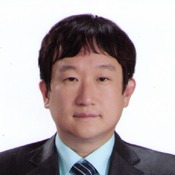Program Information
In Vivo MR Imaging Using a Combined Single-Point Dixon and Phase-Sensitive Inversion Recovery Technique
J Son*, J Hazle , J Ma , UT MD Anderson Cancer Center, Houston, TX
Presentations
SU-D-18C-3 Sunday 2:05PM - 3:00PM Room: 18CPurpose: To demonstrate combined single-point Dixon water/fat separation and phase sensitive inversion recovery imaging in in vivo brain images acquired in a single scan.
Methods: A single inversion recovery image is acquired with an inversion-time (TI) selected to maximize the dynamic range of the longitudinal magnetization of the water signals and at an echo time (TE) to introduce an orthogonal phase-difference (i.e. 90°) between the fat and water signals. In the image reconstruction, spatially smooth background phase errors due to static magnetic field inhomogeneity are estimated by applying a region growing based phase correction algorithm: the algorithm first determines spatial phase jumps of 180° and then the second spatial phase jumps of 90°. After the background phase-errors are removed from the acquired image, phase sensitive inversion recovery (PSIR) water-only image and a separate fat-only image can be generated as the real and imaginary parts of the phase-corrected image, respectively.
Results: The pulse sequence was implemented on a 3T whole-body clinical scanner and a single brain image of a healthy volunteer was acquired. The acquired image was confirmed to contain an orthogonal phase difference between water and fat boundaries and 180o phase difference between the boundaries of long and short T1-water tissues. The background phase errors were successfully determined and removed by the proposed phase correction algorithm and uniformly separated fat-only and PSIR water-only images were reconstructed without artefacts.
Conclusion: We demonstrated combined single-point Dixon water/fat separation and PSIR imaging in in vivo brain images acquired in a single scan. Such images can be useful when fat suppression and enhanced T1-contrast are desired. Potential areas of application may include imaging of the brain or myocardium.
Contact Email:


